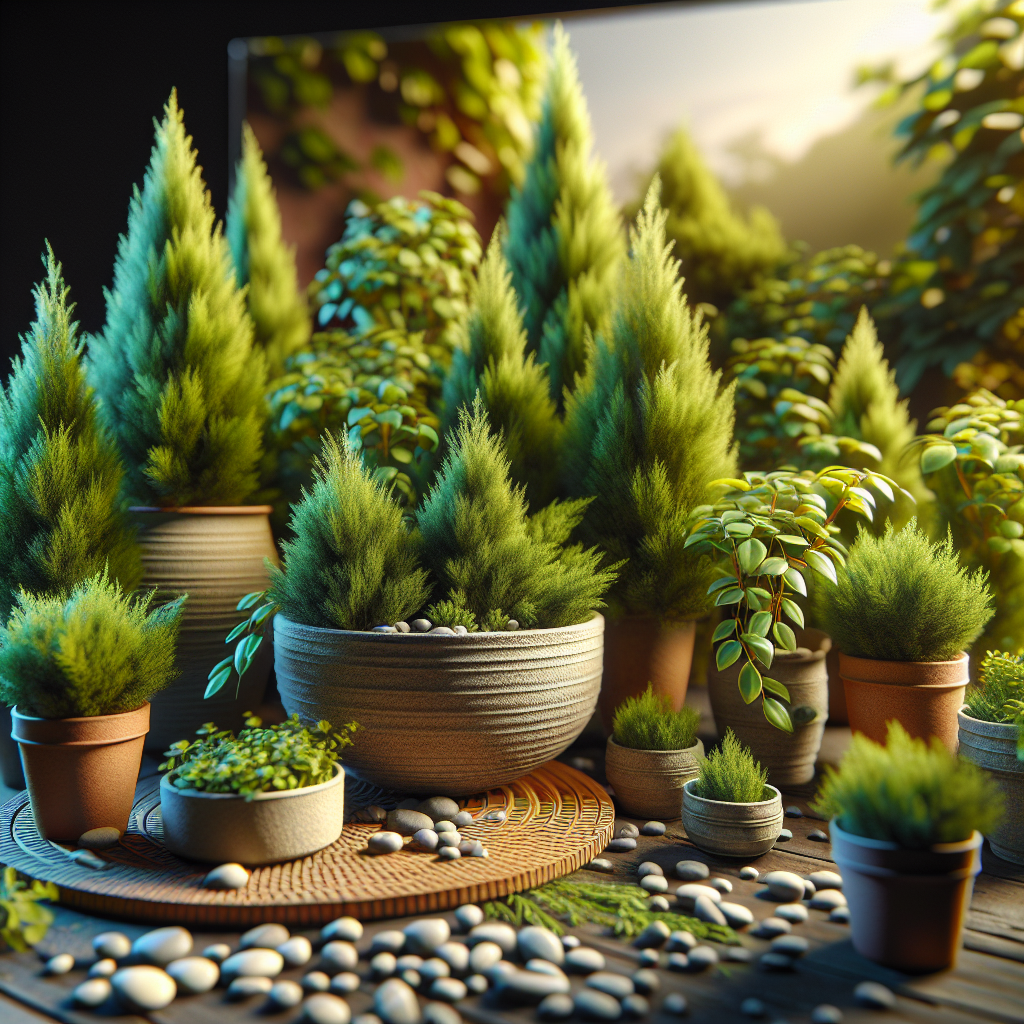Cultivating Healthy and Happy Junipers in Pots
Junipers are beautiful evergreen shrubs that are commonly grown in gardens, landscapes, and containers. They are known for their striking foliage, which can range from shades of green to blue, and their ability to thrive in various climates. Junipers are also relatively low-maintenance plants, making them an excellent choice for beginner gardeners or those looking to add some greenery to their space without a lot of effort.
One popular way to grow junipers is in pots or containers. Growing junipers in pots can be a great option for those who have limited space or want to add a touch of greenery to their patio, balcony, or indoor space. However, there are specific considerations that need to be taken into account when growing junipers in pots to ensure they remain healthy and happy.
Choosing the Right Pot
The first step in cultivating healthy and happy junipers in pots is choosing the right container. Junipers have relatively shallow root systems, so it’s essential to select a pot that has good drainage holes and is wide rather than deep. This will help prevent waterlogging and root rot, which can be common issues when growing junipers in pots.
Ideally, choose a pot that is about 2-3 times larger than the current root ball of the juniper you are planting. This will give the plant enough room to grow without becoming root-bound. Additionally, opt for a pot made from a breathable material such as terracotta or ceramic, as this will help prevent the roots from becoming waterlogged.
Selecting the Right Soil
Junipers prefer well-draining soil that is slightly acidic. A good quality potting mix designed for cacti and succulents is an excellent option for growing junipers in pots. This type of soil will provide adequate drainage while still retaining enough moisture for the plant to thrive.
It’s important not to use regular garden soil when planting junipers in pots, as it tends to retain too much water and can lead to root rot. Additionally, avoid using heavy clay-based soils as they do not drain well and can suffocate the roots of the plant.
Planting and Watering
When planting junipers in pots, ensure that the plant is positioned at the same depth as it was in its nursery container. Gently firm down the soil around the roots of the plant but avoid compacting it too tightly.
Water your juniper thoroughly after planting and then allow the top inch of soil to dry out before watering again. It’s essential not to overwater your juniper as this can lead to root rot and other issues.
Junipers are relatively drought-tolerant plants once established but will still need regular watering during periods of hot weather or when grown in containers. Water your juniper deeply but infrequently rather than small amounts frequently.
Fertilizing
Junipers do not require much fertilizer when grown in pots; however, a light application of a balanced fertilizer formulated for evergreen trees once or twice a year can help promote healthy growth. Be sure not to over-fertilize your juniper as this can lead to nutrient imbalances and potentially harm your plant.
Pruning
Regular pruning is essential for maintaining healthy growth and shape when growing junipers in pots. Trim back any dead or diseased branches using sharp pruners throughout the year to encourage new growth.
Additionally, consider shaping your juniper by selectively pruning branches that disrupt its desired form. Avoid shearing your juniper into unnatural shapes as this can weaken the plant over time.
Pest Control
Keep an eye out for common pests such as spider mites, scale insects, and aphids on your juniper plants when growing them in pots. Regularly inspect both the foliage and stems of your plant for any signs of infestation such as yellowing leaves or sticky residue.
If you notice any pests on your juniper plants, treat them promptly with insecticidal soap or neem oil spray following label instructions carefully.
Winter Care
If you live in an area with harsh winters where temperatures drop below freezing, it’s essential to protect your potted juniper plants during cold weather. Move them indoors if possible or wrap them with burlap or frost cloth to shield them from harsh winds and frost damage.
Avoid placing potted junipers near heat sources such as heaters or radiators during winter months as this can cause stress on the plant due to fluctuating temperatures.
Conclusion
Growing healthy and happy junipers in pots requires careful consideration of pot selection, soil composition, watering practices, fertilization techniques pruning methods pest control winter care among other factors By following these guidelines cultivating thriving Juniper shrubs potted containers will be rewarding experience Enjoy watching beautiful evergreens thrive space bringing touch nature into home patio garden landscape













